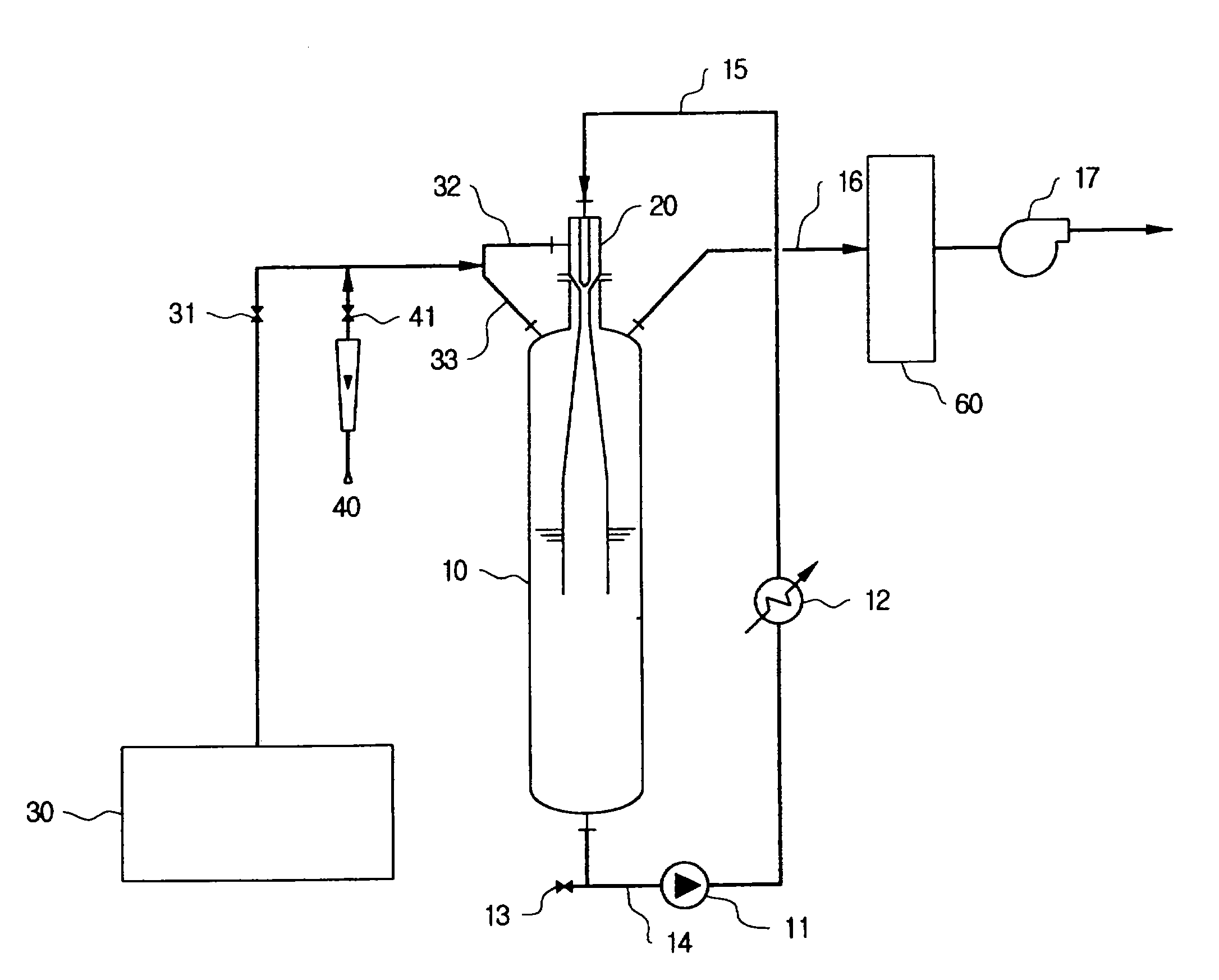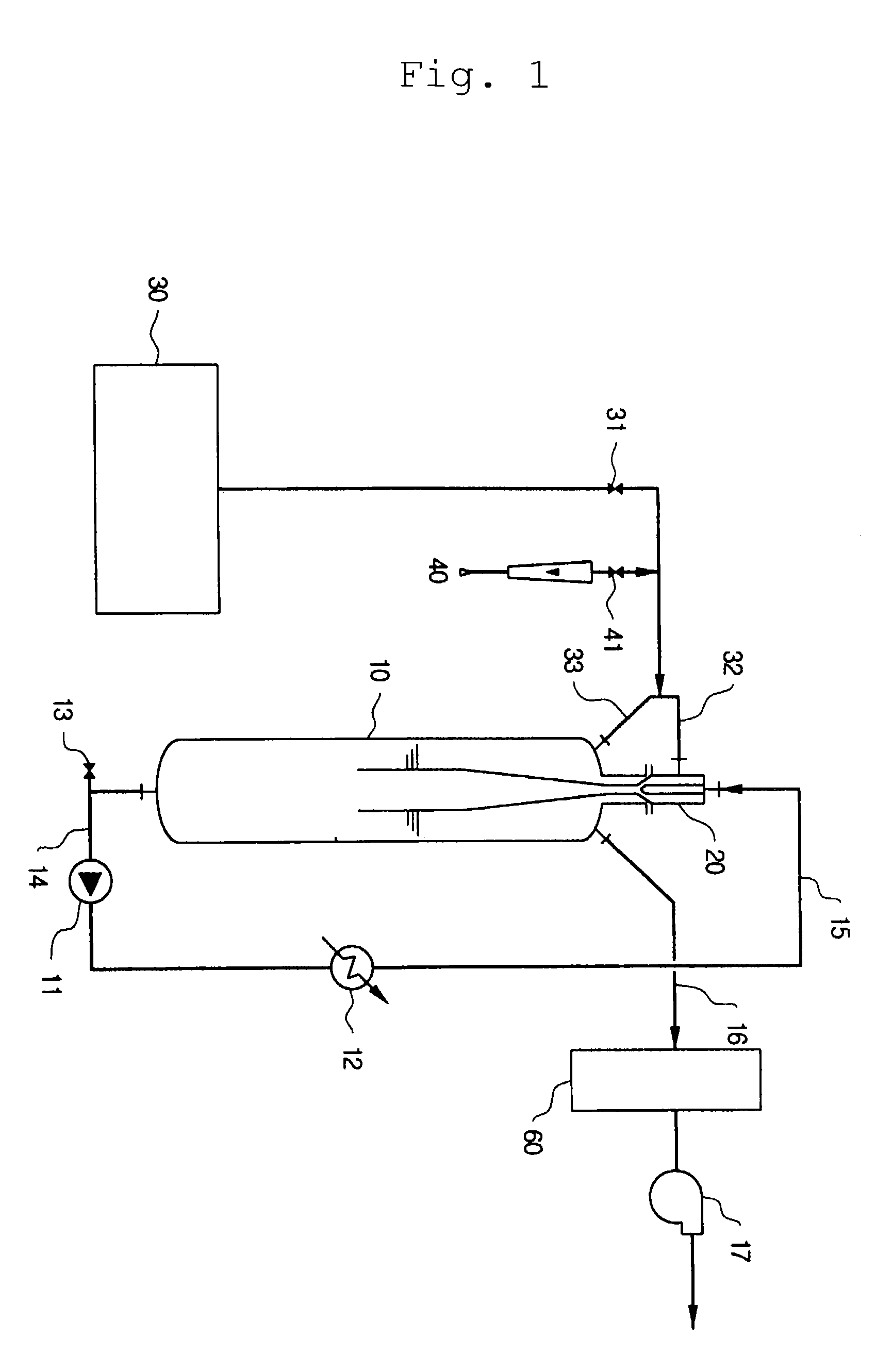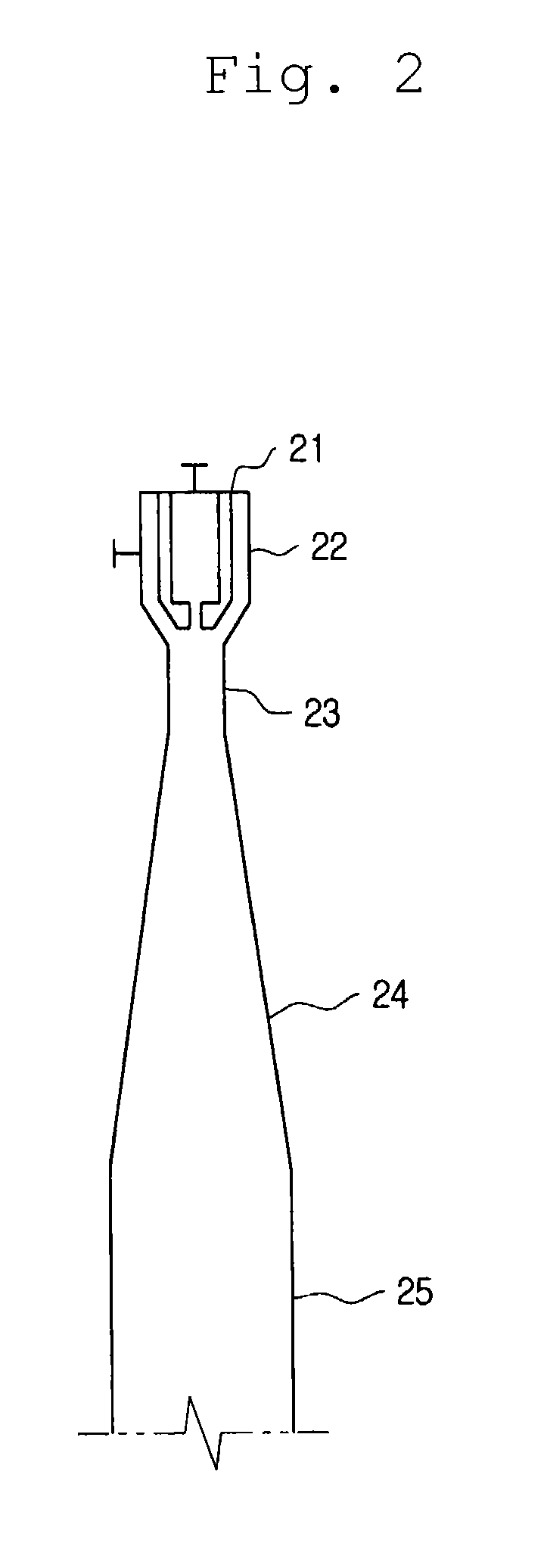Method for producing nitrogen trifluoride using jet-loop reactors
a technology of nitrogen trifluoride and reactor, which is applied in the direction of nitrogen and non-metal compounds, chemistry apparatus and processes, and ammonium fluoride, etc., can solve the problems of increasing the cost of gas, reducing the yield gradually with the passage of time, and not satisfying the nfsub>3 /sub>yield, etc., and achieves the effect of increasing the nf3 yield
- Summary
- Abstract
- Description
- Claims
- Application Information
AI Technical Summary
Benefits of technology
Problems solved by technology
Method used
Image
Examples
embodiment 1
[0060]A. Apparatus
[0061]An experiment was conducted using an apparatus shown in FIG. 1. A reactor is a vertical tube type reactor having a diameter of 8 inch and a volume of 36 l, which has a jet ejector pipe installed thereon, in which a throat having seven nozzles are provided. Inner diameters of the throat and the nozzle are 15 mm and 1.8 mm, respectively, so that the ratio of the cross sectional area of the throat to the total cross sectional area of the nozzles in the jet enjector pipe is about 10.
[0062]B. Experiment
[0063](1) Production of a Fused Ammonium Fluoride Salt
[0064]25 Kg acidic ammonium fluoride salt (NH4F.HF) was introduced into the reactor and gases in the reactor were drawn out. 8 Kg HF was slowly supplied and temperature was raised to 120° C., thus producing a fused ammonium fluoride salt. Then, Ar gas was introduced into the reactor up to ambient pressure and the fused ammonium fluoride salt was circulated through the jet ejector pipe so as to provide an even con...
embodiments 2 to 6
[0076]The embodiments were conducted by the same apparatus and method as in the embodiment 1, except that a temperature range of the fused ammonium fluoride salt was changed to a range of 100˜150° C. The yield of NF3 and the conversion of F2 for a respective temperature were shown in the following Table 1.
[0077]
TABLE 1ReactionEmbodimentTemp. (° C.)Conversion of F2 (%)Yield of NF3 (%)210076.2 ± 1.374.7 ± 1.7311096.5 ± 0.593.6 ± 0.3112097.9 ± 0.393.0 ± 0.2413098.6 ± 0.289.7 ± 0.2514099.1 ± 0.284.2 ± 0.2615099.4 ± 0.180.5 ± 0.3
[0078]The conversion of F2 became higher along with the increase of temperature while the yield of NF3 had a maximum value at 110˜120° C. but was likely to be gradually reduced in the rest of the range. The production rate of NF3 per hour also had a maximum value at 110˜120° C., and the higher the reaction temperature was, the more amount of by-products, N2F2 and N2, was produced.
[0079]At a reaction temperature of 110˜120° C., the temperature of an acid-washing c...
embodiments 7 to 12
[0080]The embodiments were conducted by the same apparatus and method as in the embodiments 1 to 6, except that a molar ratio of HF / NH3 of the fused ammonium fluoride salt was set to 3.50˜3.56. Yield of NF3 and conversion of F2 for a respective temperature at the given molar ratio of HF / NH3 were shown in the following Table 2.
[0081]
TABLE 2ReactionEmbodimentTemp.(° C.)Conversion of F2 (%)Yield of NF3 (%)710060.3 ± 2.658.5 ± 3.7811078.9 ± 0.976.6 ± 0.8912083.2 ± 1.179.9 ± 0.71013085.4 ± 0.679.0 ± 0.51114088.9 ± 0.578.2 ± 0.41215090.4 ± 0.775.9 ± 0.5
[0082]Generally, if a concentration of HF of the fused ammonium fluoride salt was excessively high, both the yield of NF3 and the conversion of F2 were low as compared with the results of the embodiments 1 to 6. As for the conversion of F2, the higher was the reaction temperature, the more was it likely to increase as in the embodiments 1 to 6, and as for the yield of NF3, it had a maximum value at 120˜130° C. but was likely to gradually re...
PUM
 Login to View More
Login to View More Abstract
Description
Claims
Application Information
 Login to View More
Login to View More - R&D
- Intellectual Property
- Life Sciences
- Materials
- Tech Scout
- Unparalleled Data Quality
- Higher Quality Content
- 60% Fewer Hallucinations
Browse by: Latest US Patents, China's latest patents, Technical Efficacy Thesaurus, Application Domain, Technology Topic, Popular Technical Reports.
© 2025 PatSnap. All rights reserved.Legal|Privacy policy|Modern Slavery Act Transparency Statement|Sitemap|About US| Contact US: help@patsnap.com



